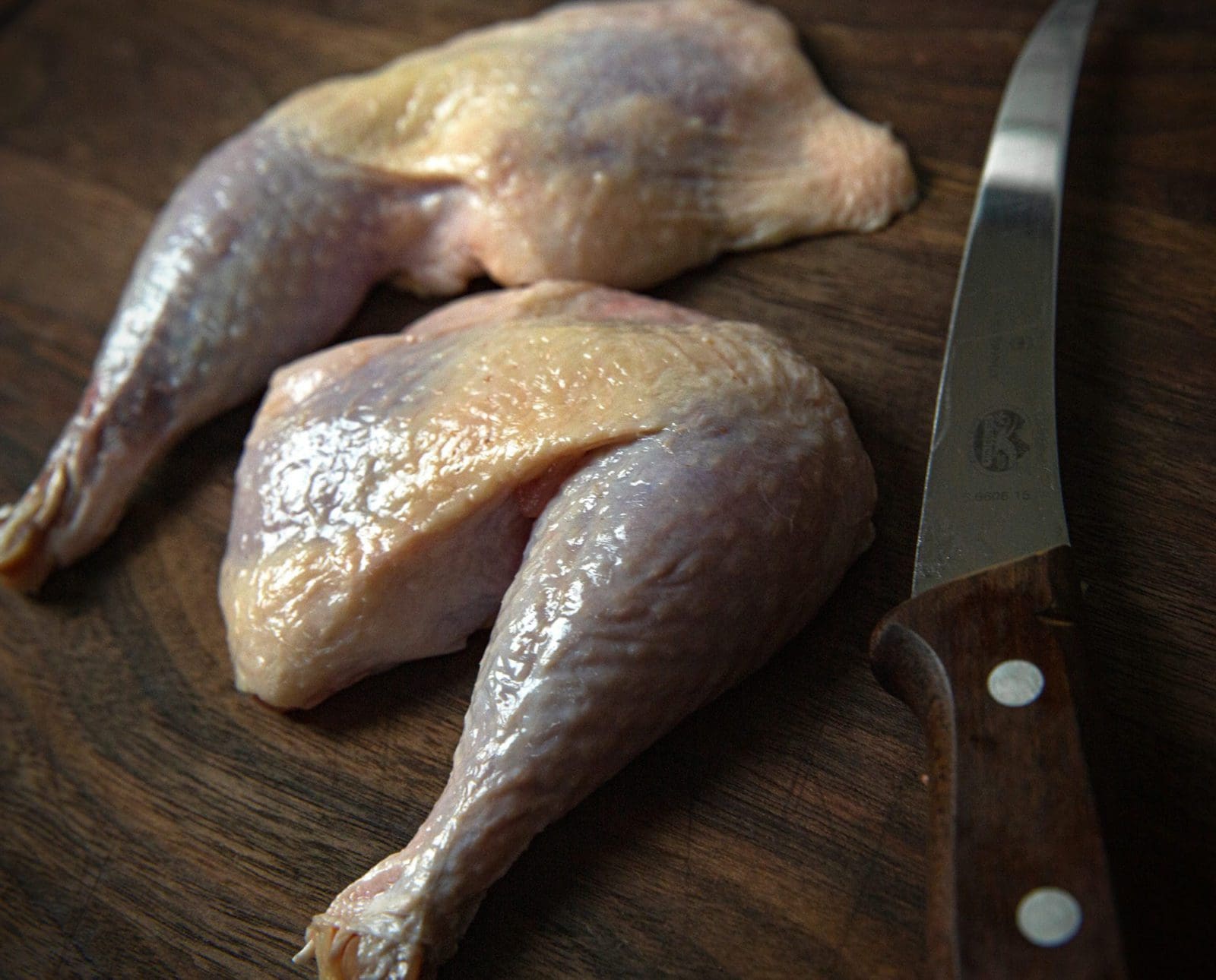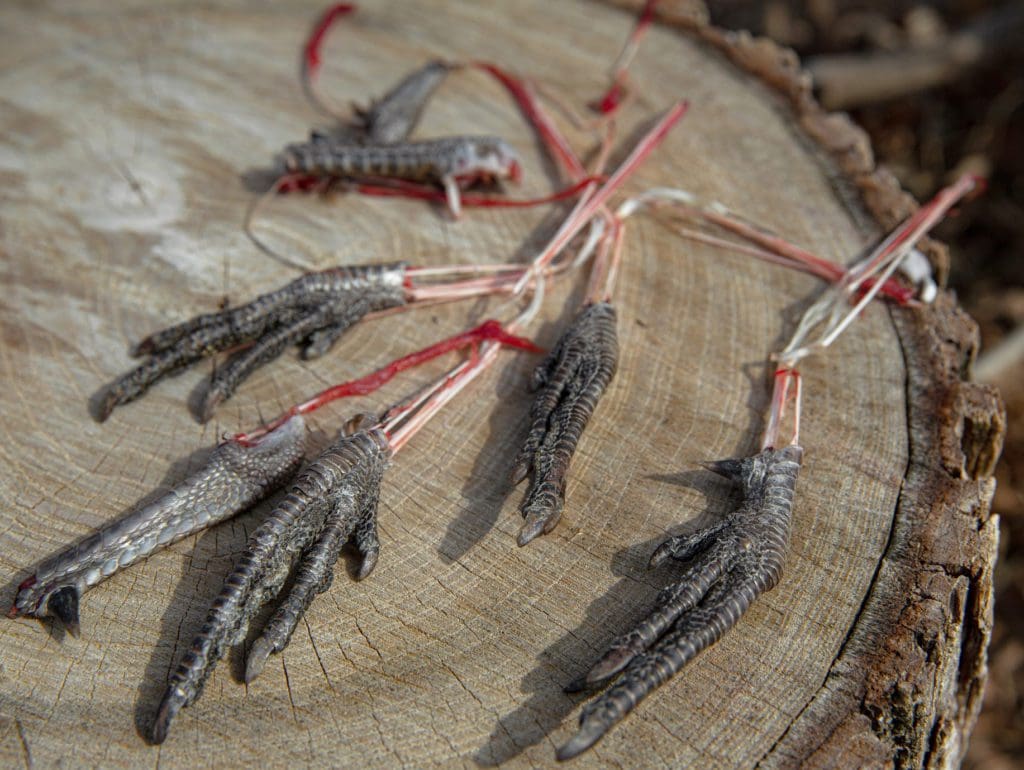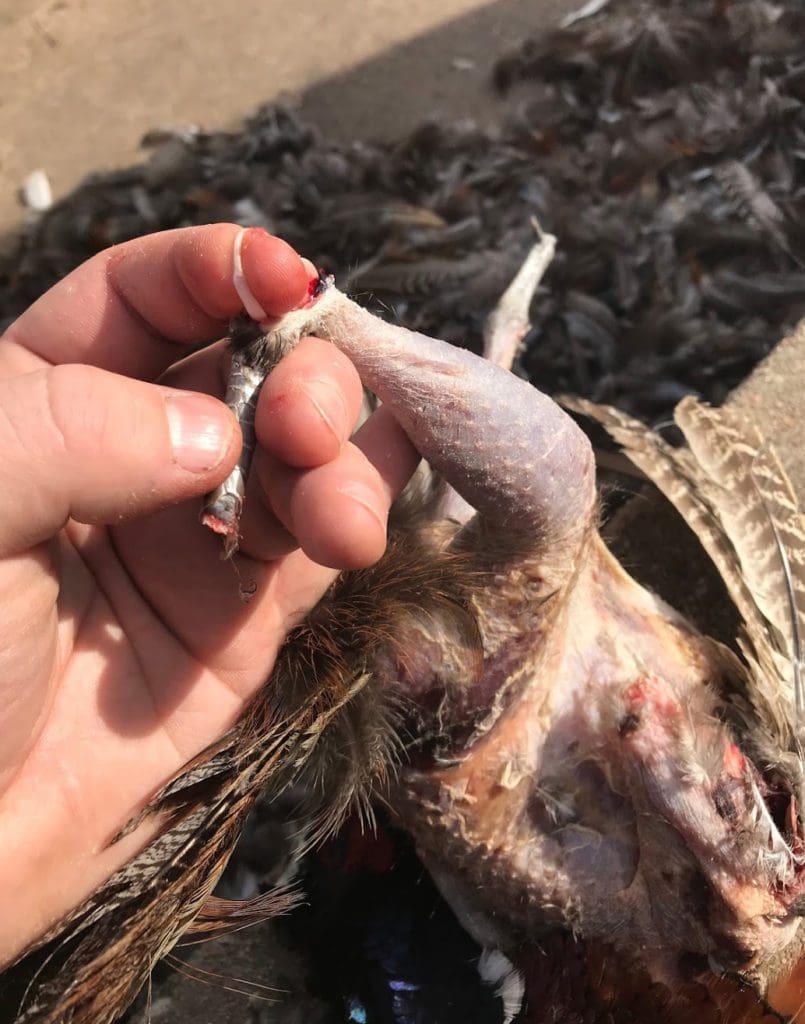Home » Small Game Cooking » How to Remove Tendons from Upland Bird Legs
How to Remove Tendons from Upland Bird Legs

Jack Hennessy grew up in the South Suburbs of Chicago…
If bird meat isn’t prepared properly, tendons can become hard to navigate in a meal
If I had to guess, tendons are one of the main reasons so many legs end up in the gut pile after cleaning.
“Coyotes got to eat too,” gets muttered as hunters walk away carrying only breasts.
Then there’s the argument: not worth the work for the amount of meat you get. And yes, tendons toughen up when cooked, turning into a set of gnarly toothpicks. I’ve even heard them referred to as “bones,” and I can understand why—they’re almost as hard.
While you can take steps to remove some tendons from your upland bird legs, I’ve yet to find a method to remove them all prior to cooking. But there are recipes that help guarantee your dinner guests never have to worry about navigating tendons. I cover all these topics below.
The spur method

One key technique hunters can employ happens in the field prior to plucking or cleaning.
It’s pretty simple: crack the leg just below the spur, put the bird on the ground, put your boot (and all your weight) on the bird’s foot, then pull up, gripping the leg above the spur. As you pull up the bird, the foot under your boot will retain a handful of tendons, thus pulling them from the leg.
I did a terrible iPhone video on this several years ago. Feel welcome to watch and make fun of me: Removing Tendons from Upland Birds.
Picking out tendons while butchering

Your second line of defense occurs when you’re butchering your birds and removing the tarsometatarsus, which is the bottom, third segment, non-meat portion of the leg.
I roll the joint and use the tip of my knife to get underneath any loose tendons until I can fit a finger in there. I then delicately pull that tendon from the meat and discard it along with the tarsometatarsus.
Recipes that make it easy to remove tendons
Any recipe that ends with meat falling off the bone will be great for removing tendons. Braising—which is searing then simmering meats in liquids for an extended period of time—is a fantastic way to get rid of tendons.
Basically, you sear the legs, cover with some sort of sauce or stock or liquid fat, then after a few hours you pull out the legs and pick off meat dangling from the bone. What you’re left with basically resembles a badminton birdie that a dog might have been chewing on. Generally speaking, any form of braising will help meat flake off the bone while tendons remain attached. Pheasant Thigh Tacos (yes, you can use legs) is a great option for this method.
Deboning is another option prior to braising, though deboning, generally speaking, does not remove tendons. However, you can again braise your deboned chunks of meat in recipes such as Tikka Masala and this will tenderize meat, making tendons a non-issue.
Another favorite method of mine for utilizing legs requires deboning but also grinding the meat and turning it into either a burger or snack sticks. In this recipe, I am also grinding other parts of the bird, including thighs and breasts, and combining that grind for the final product.
All upland birds
All of the above insight, including breaking the leg below the spur and pulling out tendons via the foot, can be used for all your upland birds – even your smaller quarry-like quail. If you’re working with a bird that doesn’t have a spur, crack the leg just below where you might expect the spur to appear.
As always, reach out with any questions or comments on Instagram @WildGameJack
Jack Hennessy grew up in the South Suburbs of Chicago and didn't start hunting until he attended graduate school in Spokane, Washington, at the age of 26. Hennessy began work in professional kitchens in high school but didn't start writing wild game recipes until he joined the Spokesman-Review in 2014. Since then, his recipes have appeared with Petersen's Hunting, Backcountry Journal, Gun Dog Magazine, among many others. He now lives with his Wirehaired Vizsla, Dudley, in Wichita, Kansas.





Leg is some of the best meat, the flavor and moisture in it make it stand out from the rest of the bird. Find some that works for you and keep them. I smoke most of mine and that drumsticks is fought over in this house no matter how many tendons are in it.
It’s a total waste just to feed a yote. They don’t need any help.